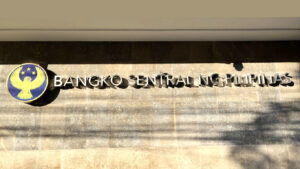THE debt service bill on foreign loans rose 7.1% year on year at the end of February, according to the Bangko Sentral ng Pilipinas (BSP).
Citing preliminary data, the BSP said external debt service rose to $2.384 billion at the end of February against $2.226 billion a year earlier.
The larger debt service bill was mainly driven by interest payments, which jumped 15.3% to $1.208 billion.
Meanwhile, principal payments declined 0.2% to $1.176 billion.
At the end of 2023, the debt service bill was equivalent to 3.4% of gross domestic product (GDP), up from 2.1% in 2022.
Outstanding external debt was at a record $125.4 billion at the end of 2023.
The external debt-to-GDP ratio stood at 28.7% in 2023. This was higher than the 27.5% ratio in 2022.
Rizal Commercial Banking Corp. Chief Economist Michael L. Ricafort said that the rise in the debt service burden was due to higher global interest rates.
“Possible rate cuts by the Fed and other global central banks later in 2024 and in 2025 could somewhat help curb the National Government’s debt servicing bill,” he added.
Markets are expecting the Federal Reserve to begin easing by the fourth quarter.
The Fed kept its funds rate unchanged in the 5.25%-5.5% range for a sixth straight meeting. It has raised interest rates by 525 basis points between March 2022 and July 2023.
John Paolo R. Rivera, president and chief economist at Oikonomia Advisory & Research, Inc., also noted the impact of foreign exchange movements on debt servicing.
“This is also affected by currency depreciation increasing the cost of servicing debt,” noting that the weaker peso increases the burden. — Luisa Maria Jacinta C. Jocson
